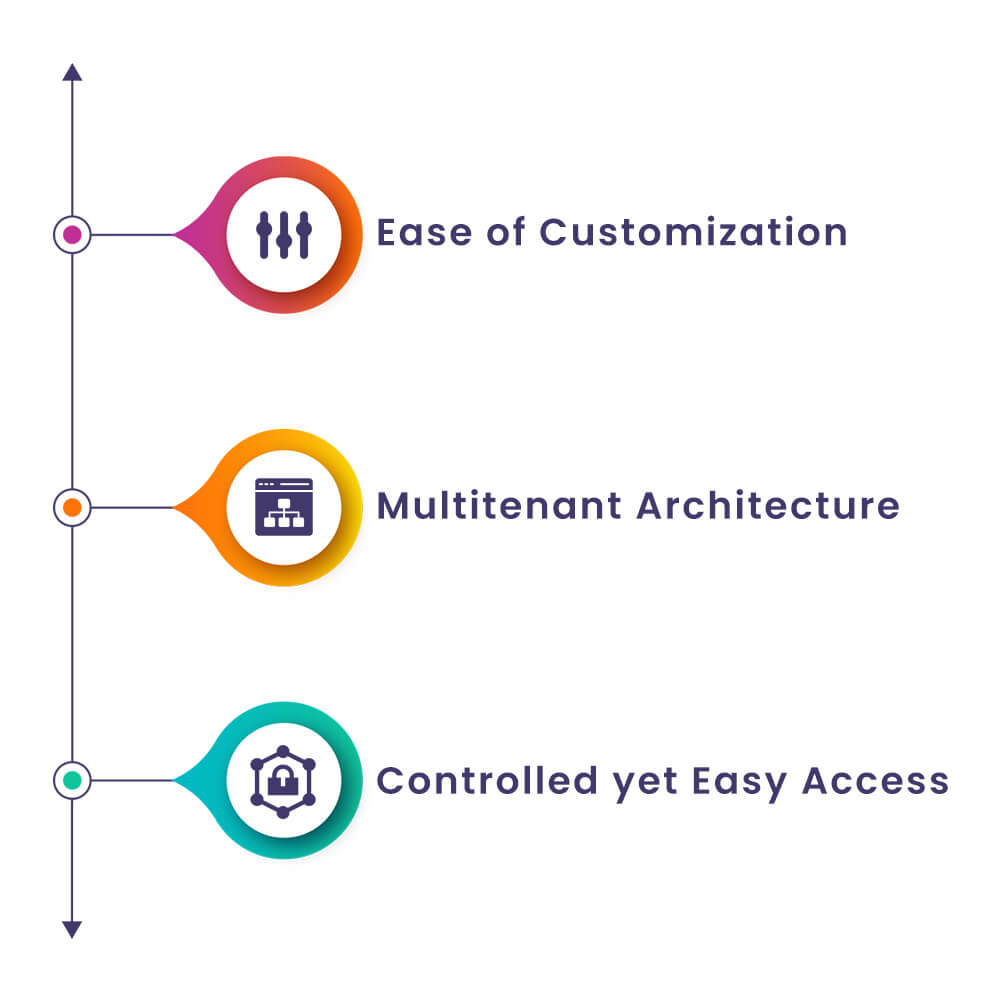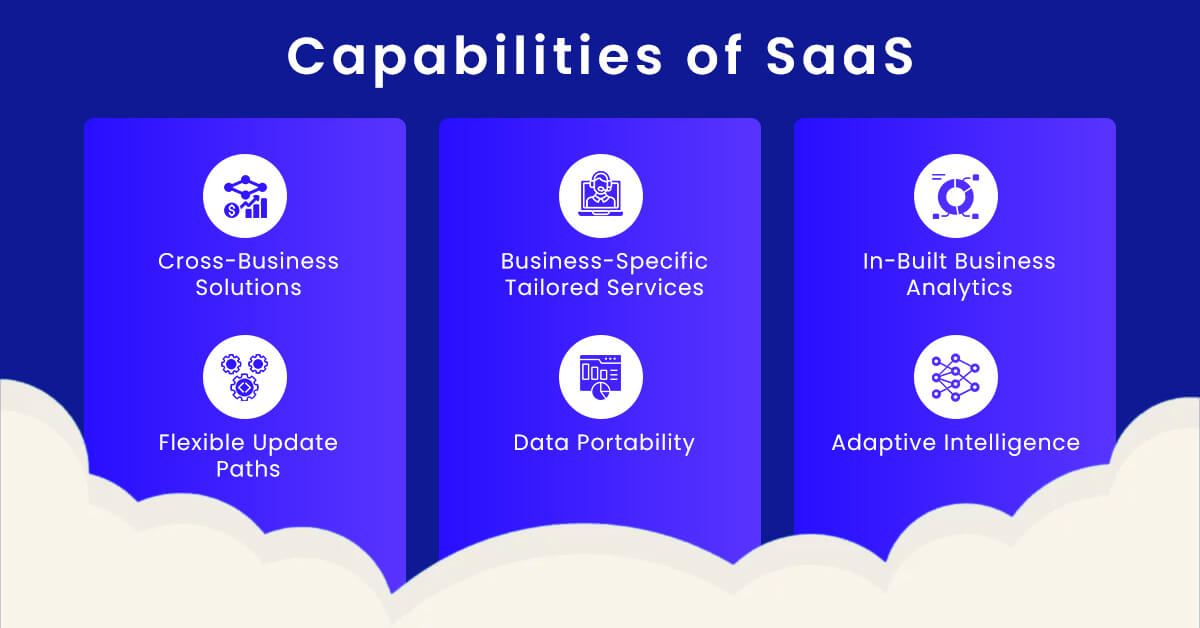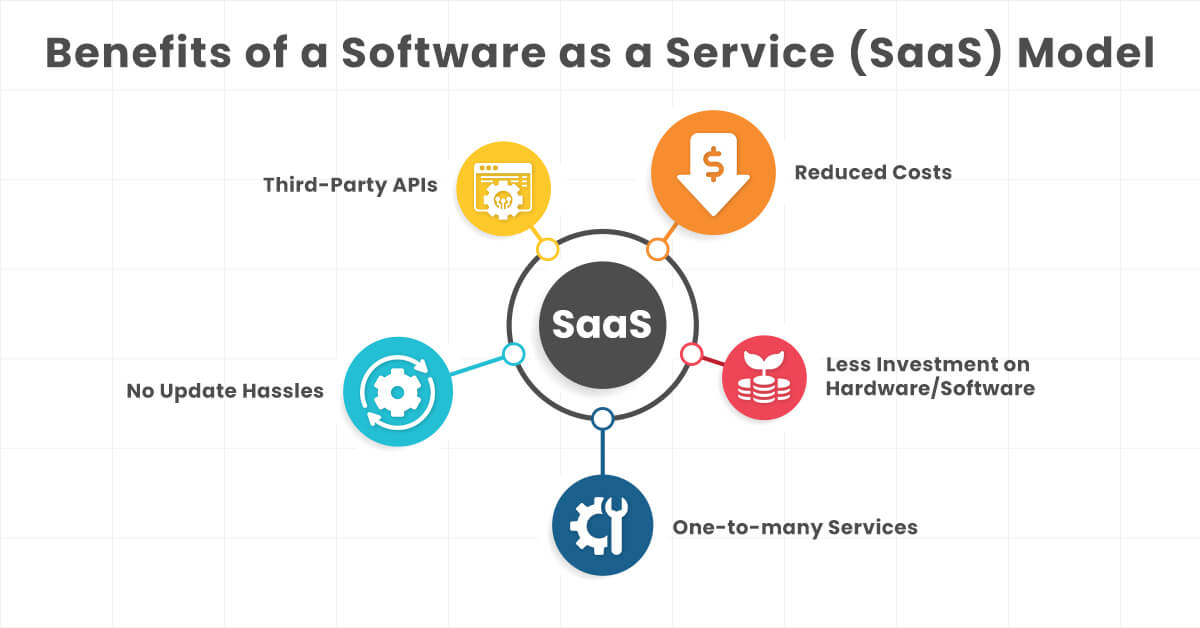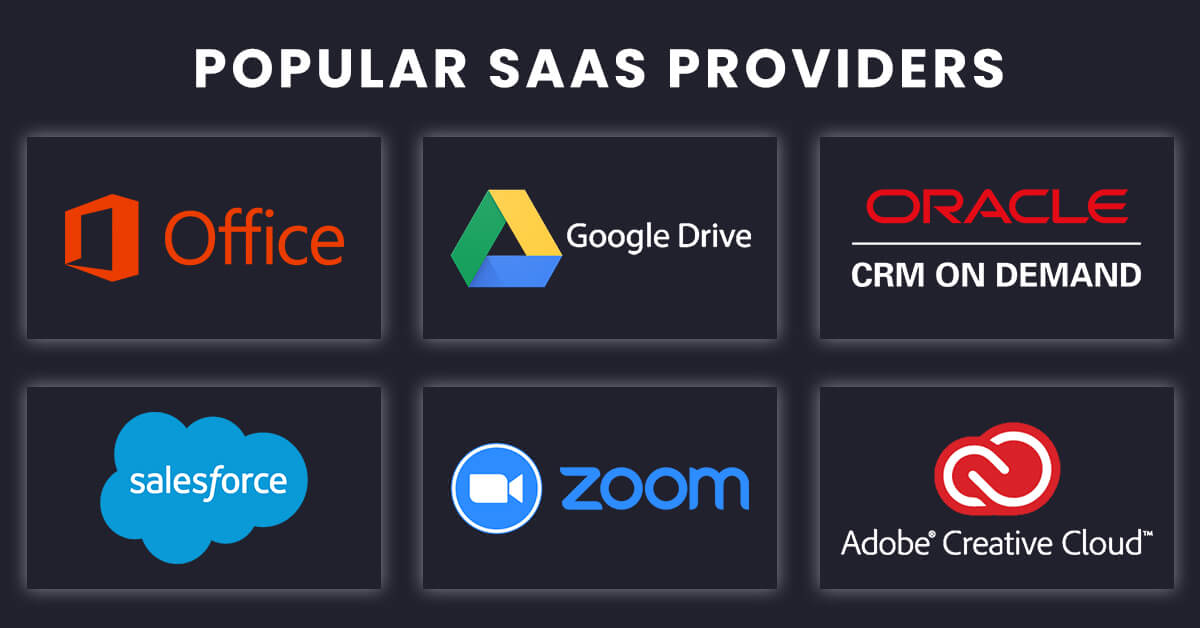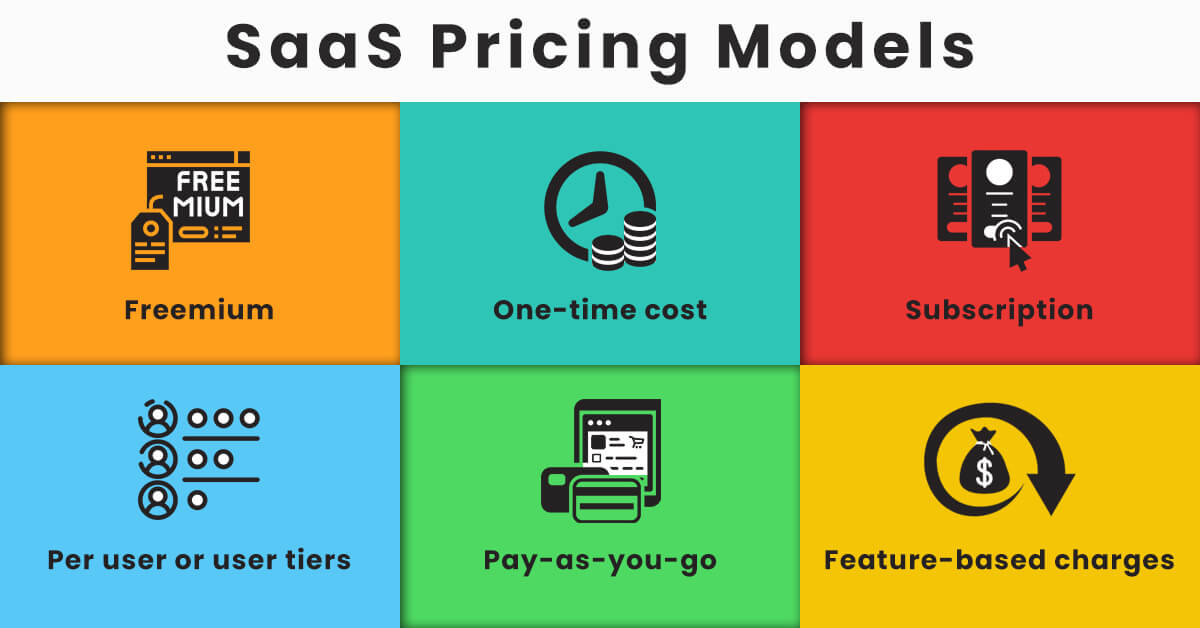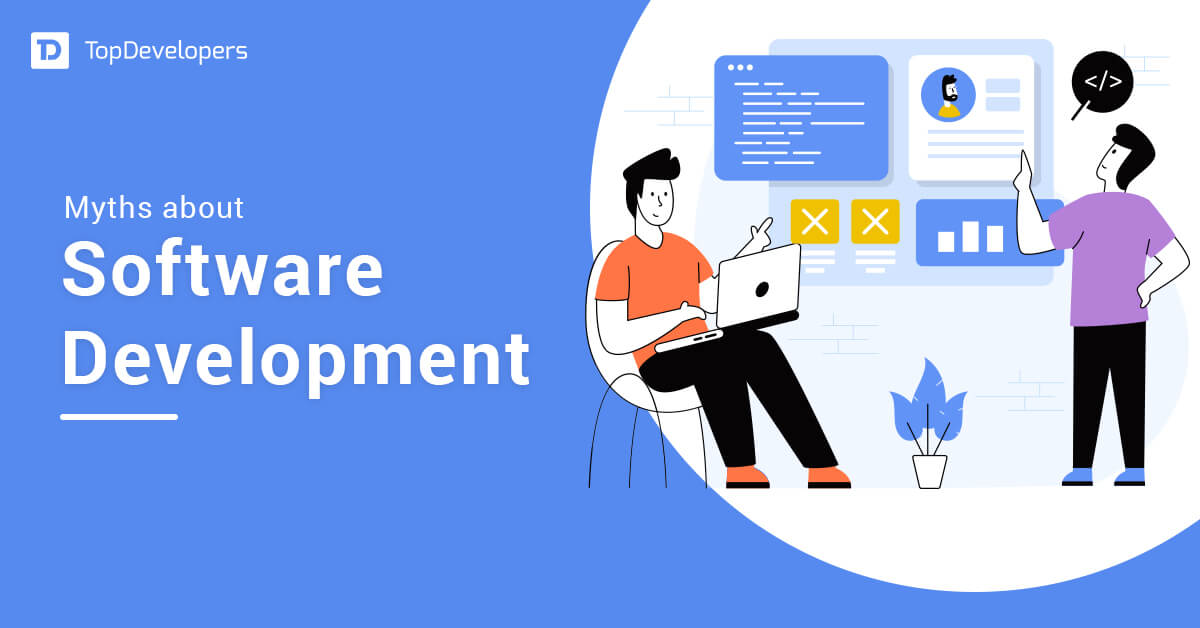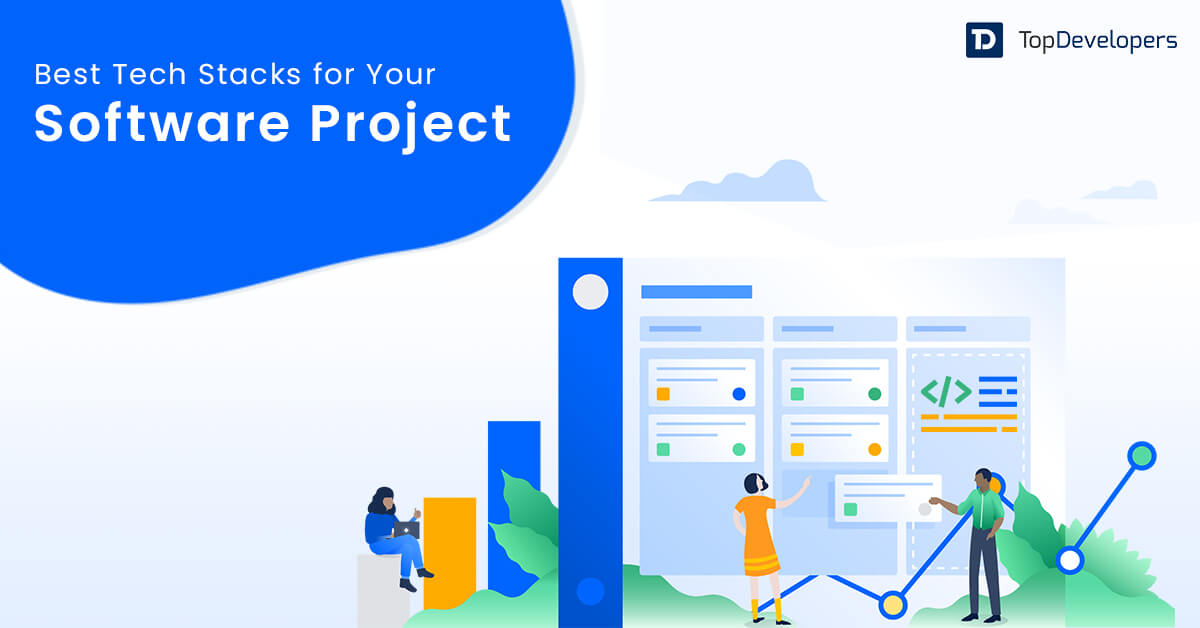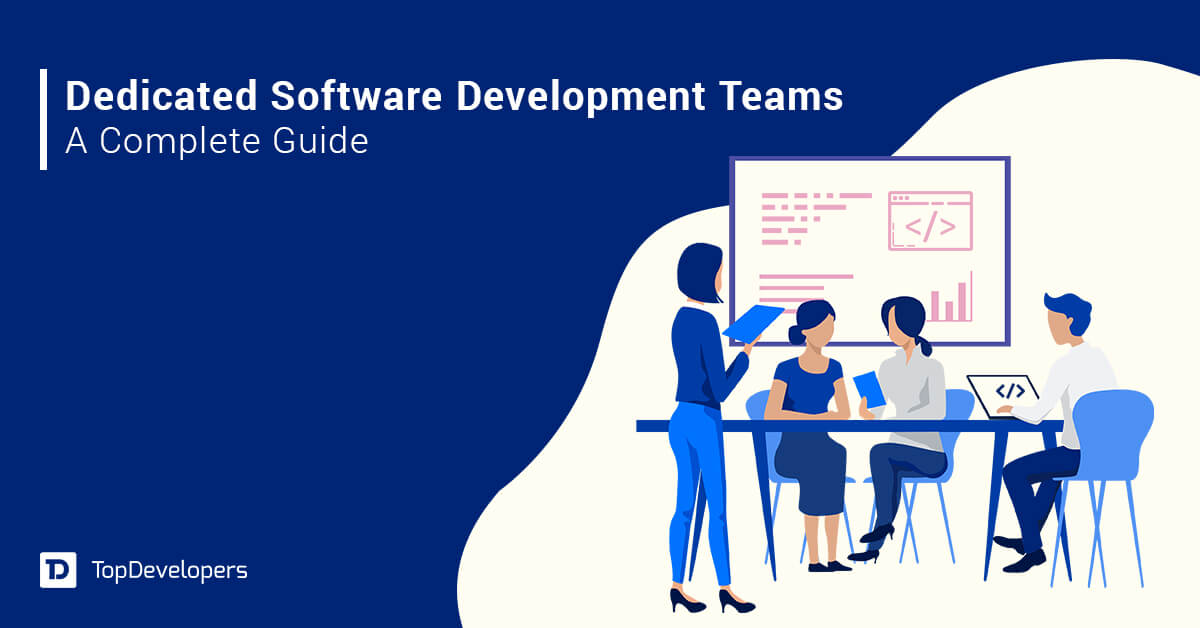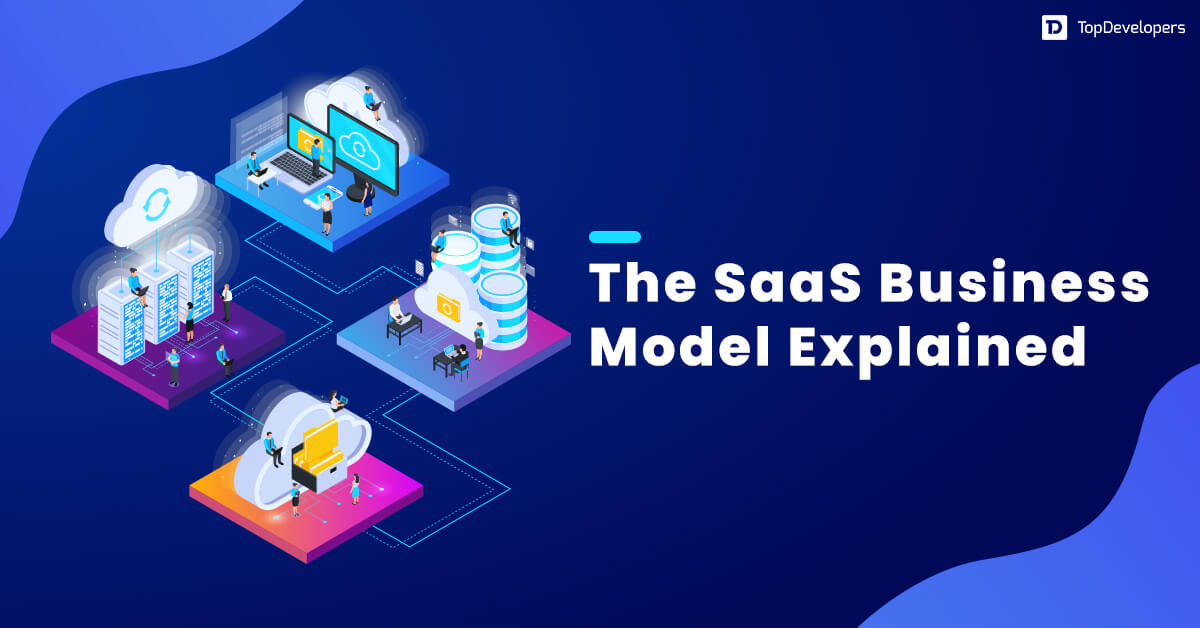
SaaS stands for Software as a Service. The simplest SaaS definition one could derive is from Salesforce Inc. It says that Software as a Service (SaaS) is an effective way of providing software applications on the Internet as a service where users don’t need to install and maintain software. Instead, they just access and use it through the Internet -it is just to set users free from complex software and hardware maintenance. A top software development company can help you develop a solution based on SaaS that caters to your business requirements and objectives.
Table of Contents
- What is SaaS?
- The important characteristics of the SaaS model
- Why do businesses adopt the SaaS model?
- User-specific benefits of the SaaS business model
- Popular SaaS business model providers
- The challenges of the SaaS business model
- SaaS vs. IaaS vs. PaaS – The Difference
- Software as a Service pricing models
- The future of Software as a Service (SaaS)
What is SaaS?
According to Microsoft, SaaS (Software as a Service) is a complete software solution that a user purchases on a pay-as-they-use basis from cloud-service providers.
SaaS software apps are also known as web-based software, on-demand software, or hosted software. Irrespective of the names, these apps are kept on SaaS providers’ servers which are responsible for their maintenance, security, and performance.
Company or business owners can rent the use of software for their firms, and their users connect to software solutions through web browsers on the Internet. Service providers’ data center holds all the underlying infrastructure (software, middleware, and hardware) and they are committed to providing flawless operations under agreements. The biggest benefit to enterprises is that SaaS helps them get required services quickly and without any big investment.
The important characteristics of the SaaS model
Software as a Service works exactly the way a bank does. Banks protect the privacy of each client and provide the best services without any compromise on security. On a massive scale, all the customers use the same financial software system and technology without bothering about privacy. Here are a few characteristics of the SaaS business model –
Ease of customization
Without disturbing common infrastructure, the customization of software (that suits vendors’ business goals and business objectives) is possible in the SaaS model. Because of the way SaaS model architecture is built, it is unique to each user, and hence upgrades could be specific to them and can be achieved with optimum security though less costs.
Multitenant architecture
There is a common infrastructure and code used by all applications and related software tools. Everything is centrally maintained and secured. The vendors can utilize the most robust infrastructure, and also innovate as and when it is required without spending much time on separate development of separate software.
Controlled yet easy access
SaaS is provided by giant tech companies that spend billions of dollars on securing the data. it provides controlled data through various privilege options and improved access to information through various devices in the network.
Why do businesses adopt the SaaS model?
Responding to the competitive market and consumer demand challenges, a modern SaaS suite can help enterprises with astounding innovative technologies for their business operations. The SaaS platform assures superior customer services as it offers entrepreneurs built-in analytics to make better business strategies and the right decisions.
Here are the SaaS capabilities that make them the first choice for not just businesses but also end users.
SaaS offers adaptive intelligence and, therefore, innovation can be brought in quickly without disturbing the present architecture. AI, Machine Learning, Chatbots, Digital Automated Assistance, and other contemporary technologies can be integrated without worrying about huge changes to their structure. In addition, Software as a Service (SaaS) can take in cross-departmental business processes to offer a holistic approach to maintaining business operations.
Enterprises also prefer the Software as a Service business model as they can share and/or move data across the board and quickly analyze data to build business strategies. Along with all such features, it includes easy personalization, swift and flexible update, and dynamism through embedded technologies.
Want to know more about how SaaS can help your business?
User-specific benefits of the SaaS business model
As mentioned earlier, most enterprises today opt for the SaaS solution because it offers enormous benefits; nevertheless, there are user-centric advantages of SaaS platforms due to which most companies, for their products and services, go for it.
Reduced costs
SaaS prices are based on subscription fees i.e., monthly, quarterly, or yearly. Hence, enterprises access business functionalities at quite affordable costs as compared to having in-house software development. The up-front cost is reduced which, in turn, will benefit the end users or customers.
No special hardware and software
The biggest benefit of availing of SaaS for enterprises and businesses is that you don’t require any investment in specific hardware or software. Since SaaS solution is generally deployed on the cloud and is maintained by tech giants, they need not worry about the additional costs to their users or customers. For instance, an optimized Gmail is available with Google for any company with a customized email address. Companies don’t need to worry about maintenance costs or invest in software or hardware.
One-to-millions
SaaS services work on a single platform but the services can be availed by millions worldwide. A single instance of a software system can be shared with multiple users at the same time. Hence, businesses would be at ease availing of SaaS software as they don’t need to bother about distribution and their software functionalities.
No update hassles
Users don’t need to worry about any manual updates. Nor do companies bother to maintain the same for their business solutions. SaaS providers are all game when it comes to maintaining the software through their regular updates. Software as a service business model offers seamless use of system applications on the cloud to enterprises and the subscription costs include all updates and maintenance.
Powered by APIs
Most SaaS business models are flexible i.e., scalable, and, therefore, enterprises can ask the service providers for certain APIs depending on the business needs or user requirements. Different plugins and APIs are available to enhance the business apps’ performance which ultimately benefits end users or customers.
Popular SaaS business model providers
All tech giants provide SaaS solutions to enterprises from all industry verticals. Whether you are a small business or own a Multinational Corporation (MNC), SaaS providers have different subscription options that suit your budget. Here are the top SaaS providers on the Internet –
- Microsoft (Office)
- Google (Drive)
- Oracle (CRM)
- Salesforce
- Zoom (Meetings)
- Adobe (Creative Cloud)
These are just a few to name renowned Software as a Service providers. Other popular products based on SaaS business models include
- HubSpot
- Trello
- Netflix
- Zendesk
- Slack
- Shopify
- Mailchimp
The challenges of the SaaS business model
Risks associated with cybercrimes in Software as a Service have been quite known among entrepreneurs and tech enthusiasts. While with traditional software the risks and threats are handled by software companies (they do it with the elimination of code-based susceptibilities), the users were also concerned about their own way of running software and securing local infrastructure.
Here, in cloud-based software as a service option, the solution providers are tech giants and they spend billions of dollars in assuring that security and privacy are in the right place; nevertheless, here are the key factors associated with SaaS deals –
- Security monitoring
- Identity and access management (IAM)
- Data Privacy
- Incident response
- Key and encryption management
- API integration and risks associated with them
- Lack of communication between security experts
- Fulfillment of data residency
SaaS vs. IaaS vs. PaaS – The Difference
While SaaS is popular among businesses, there are two other models – IaaS and PaaS. The three modules evolve around cloud service providers who offer their products and services on the Internet. The difference between these three models is their completeness. While SaaS is a fully developed model (completely managed apps), IaaS is chiefly outsourcing data center resources. Furthermore, PaaS offers a platform where other tools are hosted by various vendors.
IaaS: known as Infrastructure as a Service, it is on-demand access to the complete technical infrastructure. It offers cloud-based storage, networks, and physical and virtual servers. The backend architecture helps run software applications and workloads on the cloud.
PaaS: it is Platform as a Service wherein on-demand access is granted to a full-fledged, readymade, cloud-hosted platform to build, run, maintain, and manage any kind of software system.
It is worth noting that many enterprises (especially mid-sized companies) prefer using more than one platform or all three (chiefly large enterprises) to keep their business portal safe, secure, and fast. Enterprises that aim to provide customers access and scale their IT capabilities at affordable costs prefer availing of SaaS, IaaS, and PaaS.
Software as a Service pricing models
Compared to traditional software licenses for enterprise mobility, SaaS pricing is more affordable. For enterprises, SaaS comes as a one-stop solution to their all IT needs -from setup to the installation of hardware and software, plus hassles to maintain the software operations are cumbersome. To avoid all, most enterprises today prefer these models. The pricing, mostly, is subscription base; however, there are other Software as a Service business model costs you may come across –
Freemium: SaaS could be free, but most companies providing software as a service could restrict some of the features of their products in freemium models.
One-time cost: The flat rate is possible in many SaaS models for business. Customers or enterprises may simply purchase the full suite of software for one time and that is it.
Subscription: Probably the most popular model, a subscription-based SaaS business model shall come with monthly, quarterly, or yearly fees or charges. Companies, according to their requirements, shall subscribe for a particular period.
Per user or user tiers: Some SaaS providers offer a business model wherein the pricing is determined per user or user tier – how many users will use the service or how many active users shall exist on a single subscription.
Pay-as-you-go: Usage-based business model for Software as a Service is the fees or charges applied as users use the product. Subscribers are billed per user but then users could be charged more for the services beyond a specific point or threshold.
Feature-based charges: The fees are applied and billed as per the features used by users. The subscribers are billed more if they want to use all the features. That said, a subscription with limited features shall cost subscribers quite less. The maximum features and functionalities shall cost them the maximum.
Need help with transitioning to a SaaS business model?
The future of Software as a Service (SaaS)
Software as a Service also known as SaaS business models are popular and wholeheartedly accepted by enterprises of all sizes and types; hence, the future is bright. Cloud computing and Mobile cloud computing has come a long way in a short time because tech-inspired enterprises have spread great awareness about the subject. Even non-IT businesspersons today know how the cloud is working and how to save expenses by using SaaS business models.
The future of SaaS is beholden in high-performing computing that would offer an enormous range of services and make businesses dynamic and customized to the end users or customers. All critical challenges of businesses shall be handled by SaaS tactfully as Artificial Intelligence and Machine Learning technologies are making their way to improving and empowering software development.
Asked the Experts in SaaS
What is Software as a Service?
Software as a Service, SaaS, is a model wherein the software is offered by cloud providers to various vendors and users on the Internet. Users don’t need to maintain hardware or software. A simple example is Google’s professional email services wherein your company can get a customized email address but you shall access it through Gmail.
How does SaaS work?
This business model works on a cloud-delivery model wherein a software provider shall host the software application on its own servers or maybe an ISV (Independent Software Vendor) that contracts cloud providers to host the software solution in the provider’s data center. In most cases, the software apps are available in the cloud and are accessible by n number of users.
What are the advantages of the SaaS business model?
SaaS business model advantages are many, the first being no hassle to maintain or manage software and hardware tools by subscribers. Enterprises shall simply buy their subscription (monthly, quarterly, or yearly) and enjoy cloud-based services. Other benefits include automatic updates, scalable use of business apps, flexible payments, accessibility, and persistence services, and at last scalability through customization.
What is B2B SaaS?
B2B SaaS simply means vendors offering software services to other businesses. Such software as service products helps businesses optimize a great range of features and facilities to help them get better sales and customer services.
What is MRR?
MRR stands for Monthly Recurring Revenue. It is the most important metric for SaaS that is taken for a monthly subscription business model. Calculating MRR is easy – simply multiply the average revenue per user by the total accounts for the same month.
 Avantika Shergil
| Feb 17, 2023
Avantika Shergil
| Feb 17, 2023
Avantika Shergil is a technology enthusiast and thought leader with deep expertise in software development and web technologies. With over 8 years of experience analyzing and evaluating cutting-edge digital solutions, Avantika has a knack for demystifying complex tech trends. Her insights into modern programming frameworks, system architecture, and web innovation have empowered businesses to make informed decisions in the ever-evolving tech landscape. Avantika is passionate about bridging the gap between technology and business strategy, helping businesses build customized software and website, and understand about different tools to leverage effectively for their ventures. Explore her work for a unique perspective on the future of digital innovation.
